Cider Chorizo - Spanish Tapas
Saturday, February 24, 2024
Asturias is a breathtaking part of Spain and is mainly known for its impressive landscapes of stunning natural beauty. The high mountains roll down to meet the sea and form a dramatic coastline. However, Asturias is also well known for its vast orchards and its centenary expertise in making some of the world’s best cider. One of the main ingredients in this recipe. The cider from Asturias is natural, bubble-free, cloudy and above all dry. It is an apple cider that goes magnificently well with the local fresh "non-cured" smoked chorizo (at most semi-cured) to bring this Spanish masterpiece to life, a treat for anyone's palate.
Chorizo a la Sidra, is a simple yet delectable delicacy that has won over palates both locally and across the globe. The dish's charm lies in its simplicity: chorizo sausage cooked in cider, combining the meaty, spicy flavours of the sausage with the sweet, tangy essence of cider. It's a perfect example of how a handful of quality ingredients can create a dish far greater than the sum of its parts. Whether you're in Spain or on the opposite side of the world, this recipe will help you bring a taste of Asturias into your home using ingredients that are locally sourced wherever possible.
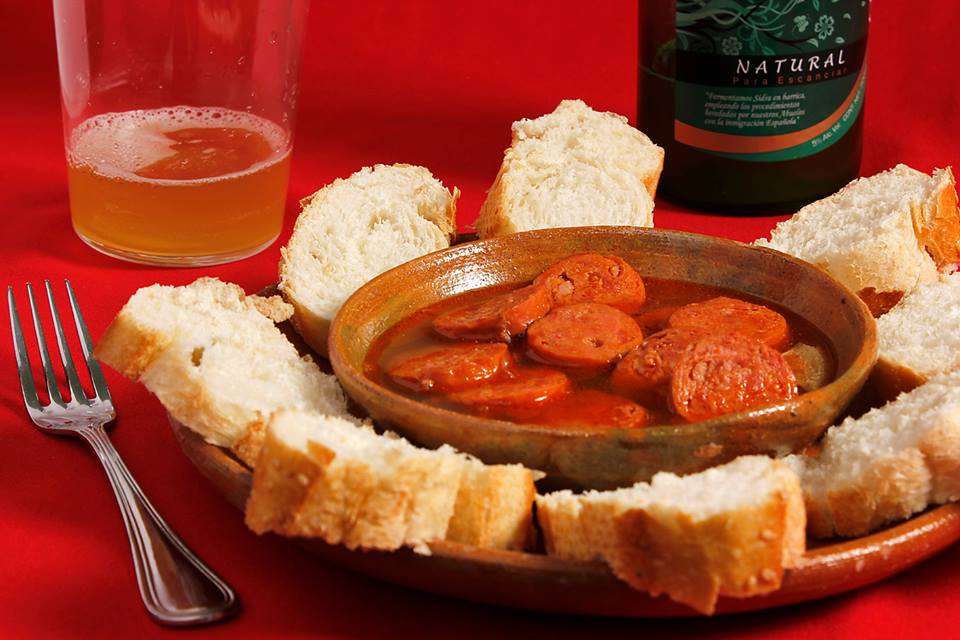
Ingredients
-
Chorizo: In Spain, fresh chorizo is widely available, seasoned with garlic and pimentón (Spanish paprika) which gives it its characteristic flavour and colour. Ideally, use Asturian Chorizo which offers the best texture and flavour for this dish (readily available in Mercadona and Consum). For those outside of Spain, look for a fresh Spanish-style chorizo at speciality stores, or choose a fresh, spicy sausage available in your local market as a substitute.
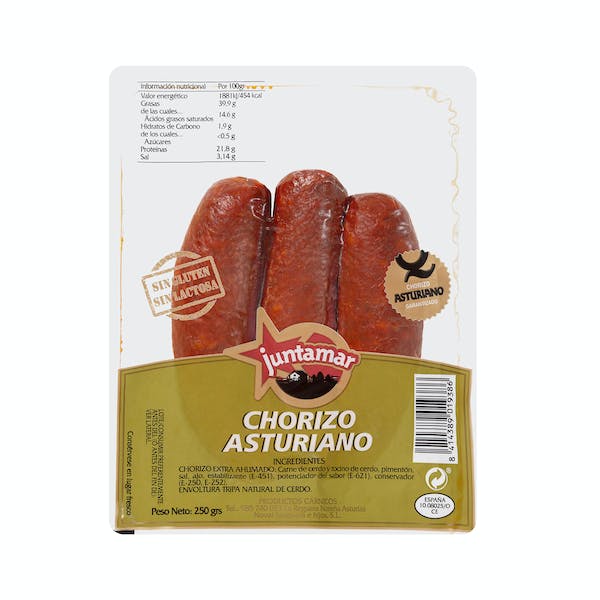
-
Cider: Asturian cider, known as 'sidra', is traditionally used in this dish. It's a still, natural cider that's less sweet and more acidic than most commercial ciders available internationally. Outside of Spain, seek out a dry, natural cider to come closest to the traditional taste. Avoid overly sweet or flavoured ciders as they can alter the authentic flavour of the dish.
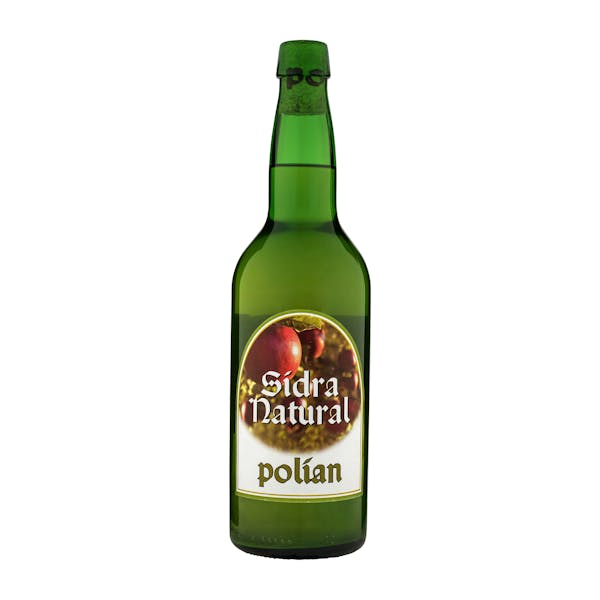
Instructions
-
Gather Your Ingredients: Purchase fresh chorizo and natural Asturian cider from your local market. A couple of bay leaves are also necessary to round off the flavours with the garlic.
-
Prepare the Chorizo: Prick the chorizo sausages with a fork. This allows the cider to penetrate the sausage and mix with its fats and spices. Don't chop it up!
-
Cook the Chorizo: In a large saucepan or earthenware dish, add the chorizos and enough cider to cover them. Add the bay leaves and the garlic. Simmer over low heat for 20 to 30 minutes, turning the sausages occasionally to ensure they cook evenly.
-
Making the sauce: Once the chorizos are cooked, remove them and place to one side. Then reduce the liquid in the saucepan until you are left with a thin sauce, but be careful not to reduce it too much or you will just be left with the fat released from the chorizo.
-
Serve Warm: Once the chorizo is cooked through and the cider broth has reduced, creating a flavourful sauce, it's time to serve. Slice the chorizo into bite-sized pieces, place in an earthenware dish and pour over the sauce. Accompany with plenty of crusty bread to soak up the delicious cider sauce.
Here is a video that shows the steps perfectly :
Serving Suggestions
Chorizo a la Sidra is traditionally enjoyed as a "tapas" dish, served in small portions that are perfect for sharing. It pairs wonderfully with a glass of crisp, cool cider, echoing the flavours used in cooking. A side of Spanish tortilla or a simple salad can round out the meal for those seeking a fuller dining experience.
Chorizo a la Sidra is a testament to the power of simple Spanish cooking, demonstrating that quality ingredients, treated with respect, can create a dish that transcends borders.
Whether you're cooking in Spain with the luxury of local Asturian ingredients or adapting the dish to suit your local market abroad, the essence of this Asturian favourite can be captured and savoured. So, gather your ingredients and give it a go!
 2
Like
Published at 11:09 AM Comments (4)
2
Like
Published at 11:09 AM Comments (4)
The Perfect Fried Egg
Saturday, February 17, 2024
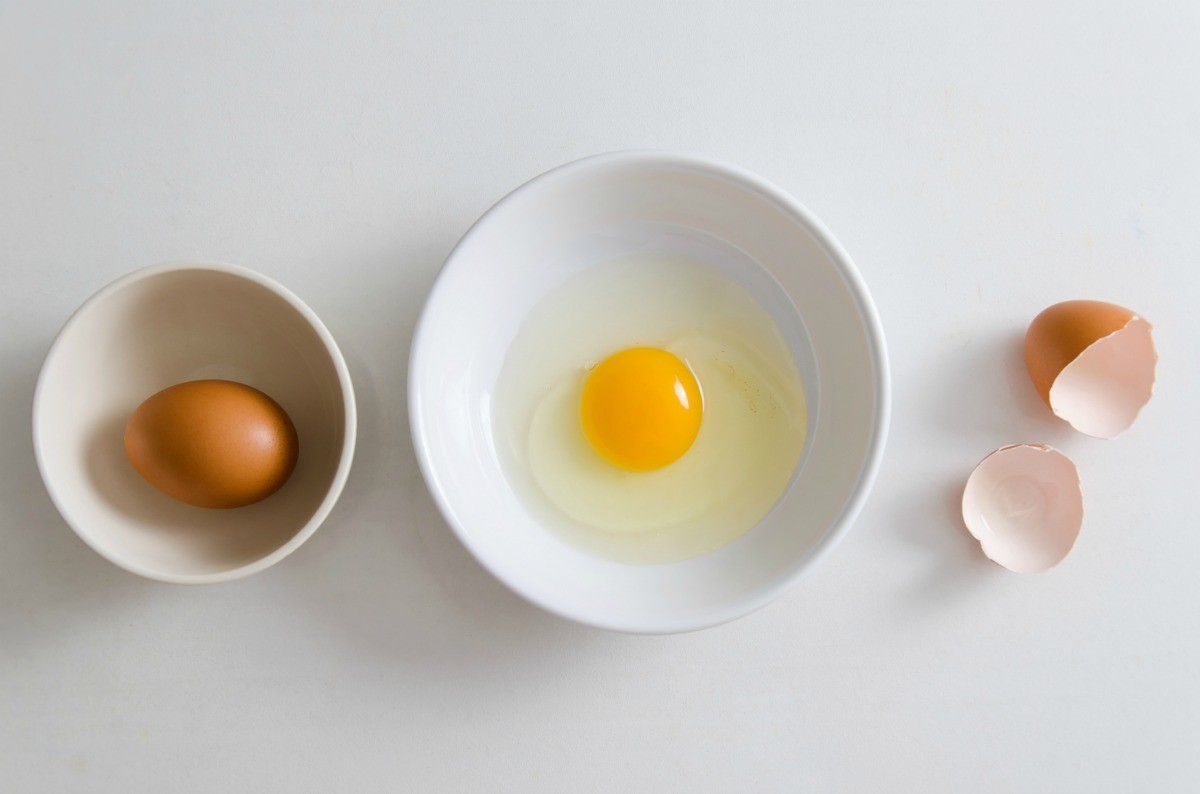 While there are a number of ways to fry an egg, from sunny-side-up to over-easy, one method, in particular, is in my opinion, the very best way to go about it. While there are a number of ways to fry an egg, from sunny-side-up to over-easy, one method, in particular, is in my opinion, the very best way to go about it.
It’s the way it's done in Spain, and it’s something you should try immediately if you haven't already!
Spanish fried eggs - huevos fritos, are as decadent as fried eggs come. It’s an egg fried very quickly in very, very hot olive oil. Instead of using just a little bit of olive oil or just a non-stick pan, they’re fried in a very generous amount of olive oil (extra virgin please) — and they’re basted in the oil while they cook. The result is a fried egg with a seriously crispy yet delicate white that crunches, with lacy edges and a perfectly just-set yolk that practically melts in your mouth. Perfection. It turns egg frying into an art form.
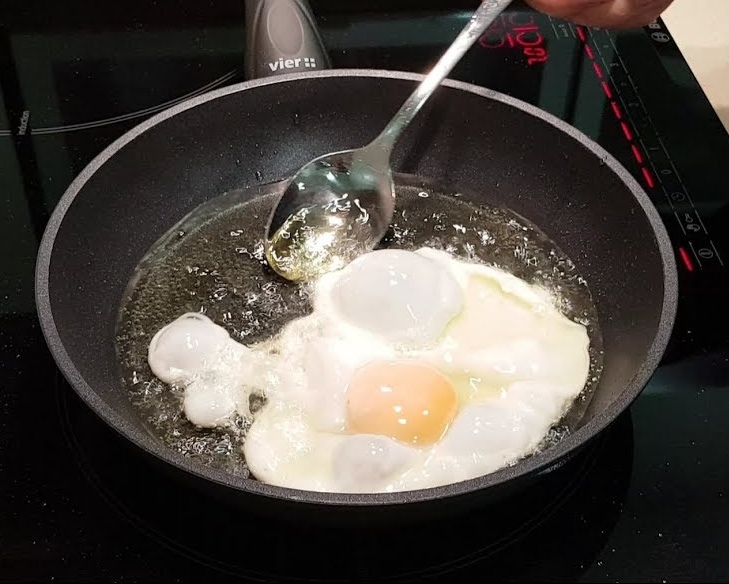
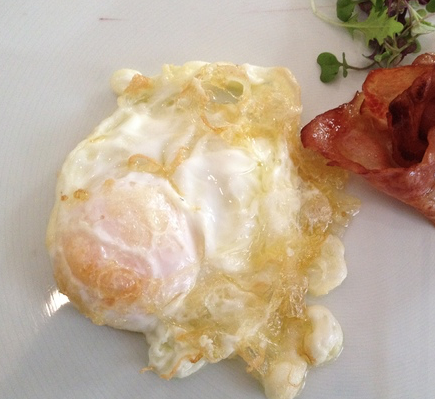
To prepare this Spanish delight, pour about 1/4-inch (deep) of olive oil into a small, but deep frying pan. Heat it over medium-high heat until it’s extremely hot about 185ºC use a thermometer if you can. Crack 1 egg into a small saucer or small bowl. When the oil is hot, carefully slip the egg in and reduce the heat to medium. Then spoon some of the oil over the egg as it cooks, either with a spoon or a slotted spoon. This will help to speed up the cooking of the egg white on the upper side without having to wait and overcook the yolk as a result. Remove the egg with a slotted spoon after no more than 1 1/2 minutes (when the white puffs up and becomes crispy and golden-brown around the edges, and when the yolk is still wobbly). Be very careful that the slotted spoon doesn't stick to the egg and ruin everything! To avoid this soak the spoon in the hot oil before adding the egg this will even out the temperature between the spoon and the egg. When ready, serve immediately, sprinkle with a bit of salt and freshly ground black pepper to taste. And of course, always serve with a side of bread. It is unthinkable to serve eggs without bread in Spain. It just simply isn’t done.
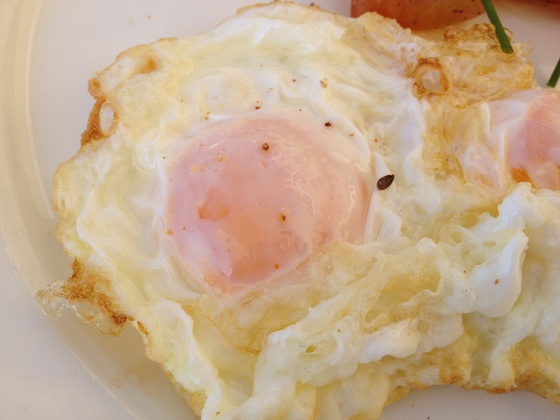
Here is a video I found that demonstrates it very well!
Enjoy!
 1
Like
Published at 1:07 PM Comments (1)
1
Like
Published at 1:07 PM Comments (1)
Platos de Cuchara - Lentejas con Chorizo
Saturday, February 3, 2024
Spain's rich culinary landscape has been attracting food enthusiasts from around the globe for generations. Among the variety of traditional dishes that grace the Spanish table, Lentejas con Chorizo, a delightful combination of lentils and chorizo sausage, reigns supreme. It is undoubtedly one of the easiest 'platos de cuchara' you can make.
This dish, with its humble origins and bold flavour, is a testament to the Spanish approach to cooking: simple quality ingredients, resulting in dishes that are greater than the sum of their parts. If you’ve never cooked Spanish food before, Lentejas con Chorizo is a great place to start. All ingredients are readily available in most supermarkets in the UK and of course, in Spain, there are no issues. If you can't find the brown Pardina Spanish lentils, you can also use small green lentils.
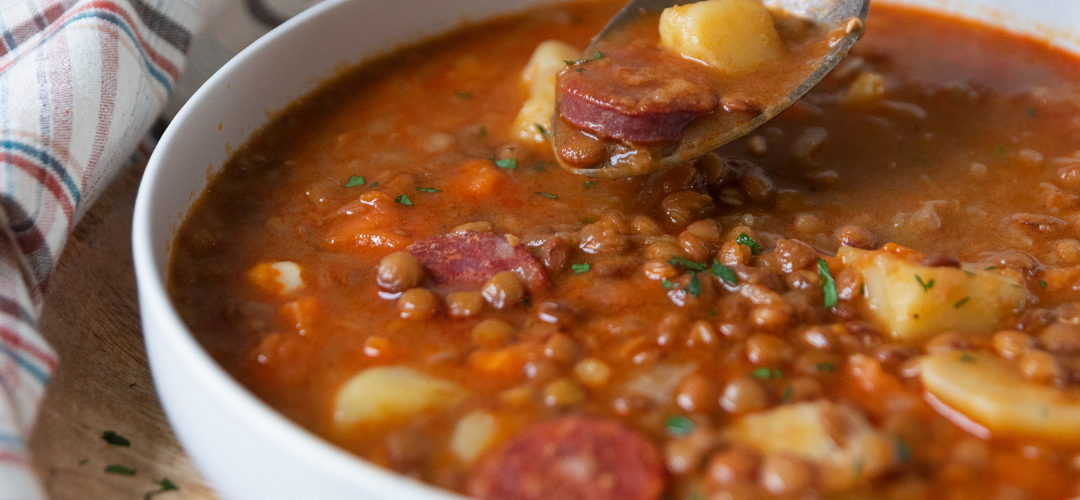
The Origins of Lentajas Con Chorizo
The hearty meal of Lentajas con Chorizo finds its core origins in Spanish rural cuisine. As with many traditional dishes worldwide, it began as a way for peasants to prepare something nutritious and tasty with the few ingredients they had at their disposal.
Lentils were an integral part of the Spanish diet due to their high nutritional value and long shelf life. Similarly, chorizo, a Spanish sausage known for its rich, smoky flavour and striking red colour from the local smoked paprika or 'pimentón', was a staple food item in many Spanish households. Over generations, these simple, accessible ingredients were married together to create the hearty, flavourful dish that we enjoy today.
Gathering the Ingredients
Before you get started, it's essential to gather all the necessary ingredients. Here is what you'll need:
-
2 cups of lentils (soaked overnight)
-
1 large brown onion, diced
-
2 cloves garlic, minced
-
200g chorizo, sliced into 1/4 inch pieces
-
100g pancetta diced
-
1 bell pepper, diced
-
2 carrots, diced
-
1 large tomato, diced
-
2 potatoes, diced
-
4 cups chicken stock
-
2 bay leaves
-
1 tsp smoked Spanish paprika
-
Salt and pepper to taste
-
EV Olive oil for sautéing
Add a glass of red Spanish wine and crusty bread on the side for serving, and you have a veritable feast awaiting you.
Cooking Step-by-Step
Step 1: Prepare Your Ingredients
Begin by preparing your ingredients. Make sure all your vegetables are diced, the garlic minced, and the chorizo sliced. Easy access to pre-prepped ingredients makes the cooking process smoother.
Step 2: Begin Sautéing
In a large pot, heat up some olive oil over medium heat. Once heated, toss in your diced onion and minced garlic. Stir often until they become fragrant and the onion turns translucent.
Step 3: Add the Chorizo and the pancetta
Add the pancetta first and fry for a minute or so until cooked. Next, it's time for the highlight of the dish - the chorizo. Add your sliced sausages to the pot, cooking them briefly until they start releasing their flavorful oils.
Step 4: The Vegetable Medley
Then, introduce the bell pepper, carrots, tomatoes, and potatoes to your sauté. Continue to cook these for about 5 minutes, stirring occasionally.
Step 5: Lentils and Spices
Now, add the star of the show - the lentils. Also, add the bay leaves, paprika, and chicken stock or water. Stir until everything is well mixed.
Step 6: Let It Simmer
Lower the heat, cover your pot, and let it simmer for about 40-45 minutes, or until the lentils and potatoes are cooked to your preferred tenderness. Remember to stir occasionally, and add more stock or water if needed.
Step 7: Season and Serve
Finally, season your dish with salt and pepper to taste. Remove the bay leaves, ladle your Lentajas con Chorizo into bowls, and serve hot with your Spanish wine and crusty bread.
With these step-by-step instructions, you can bring the taste and tradition of Spain into your kitchen. Whether you're a seasoned cook looking to expand your repertoire or a beginner eager to delve into Spanish cuisine, Lentajas con Chorizo is a simple fool-proof dish for anyone to master.
Enjoy!
 1
Like
Published at 10:03 AM Comments (0)
1
Like
Published at 10:03 AM Comments (0)
Spam post or Abuse? Please let us know
|
|